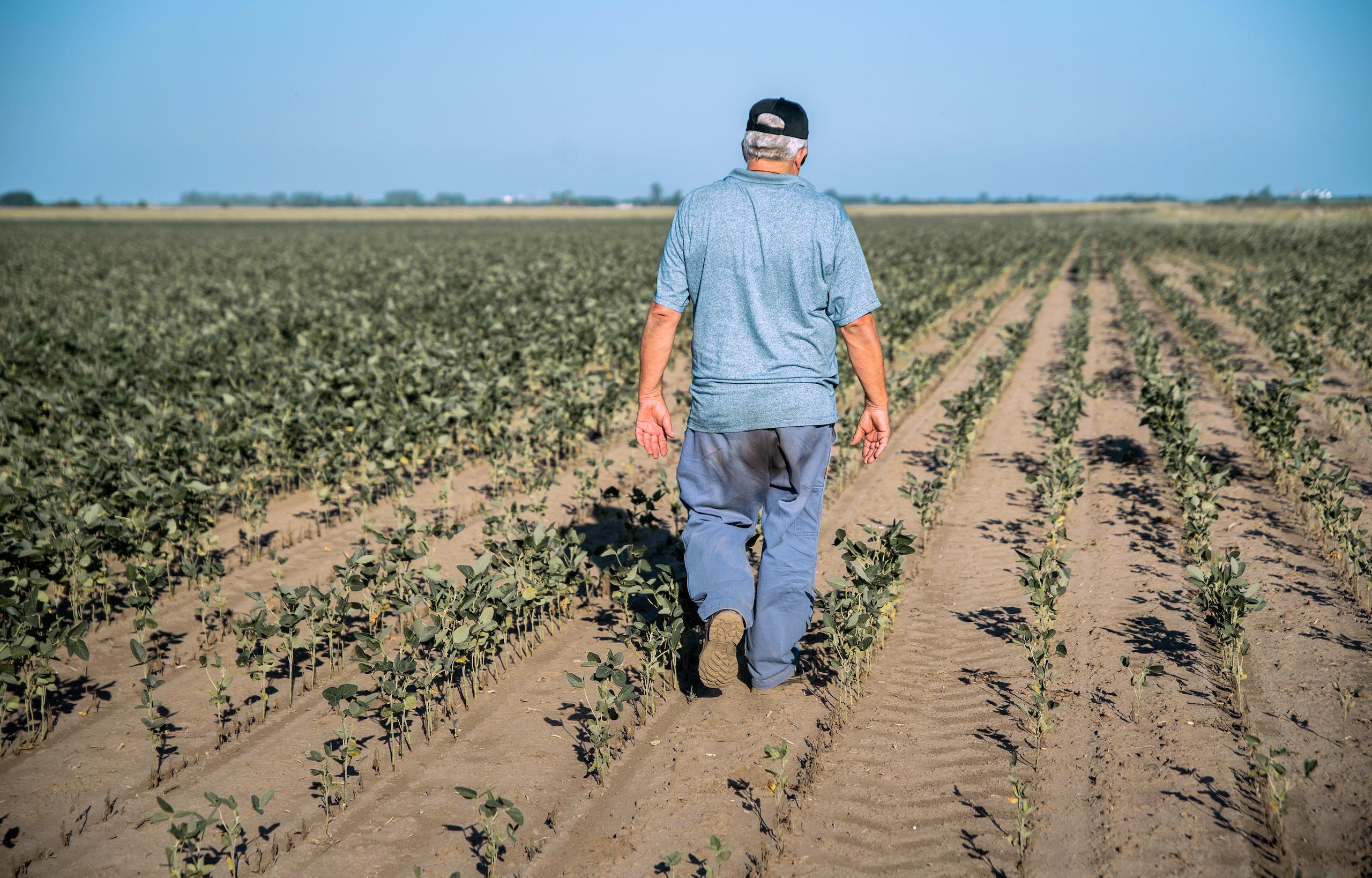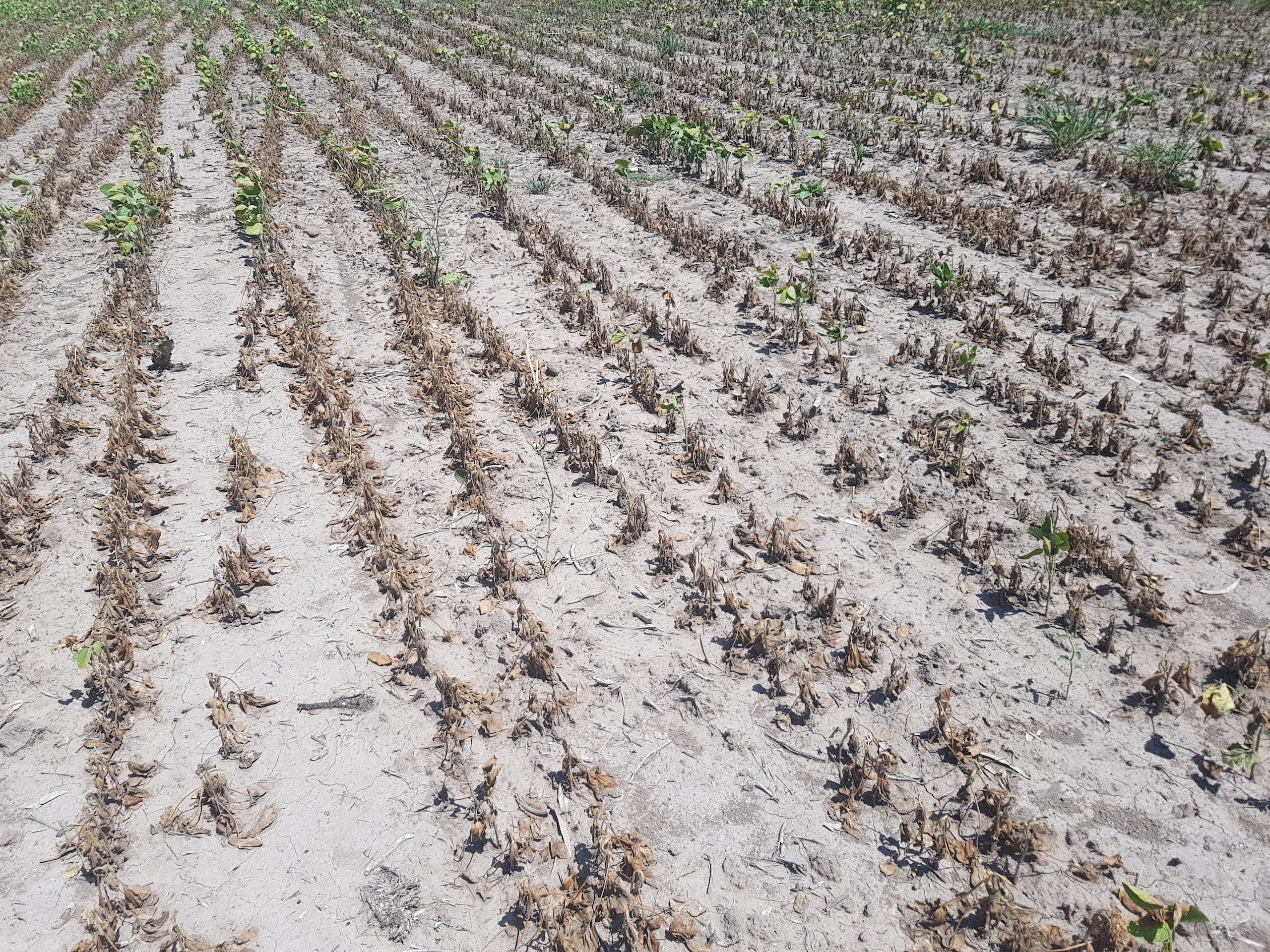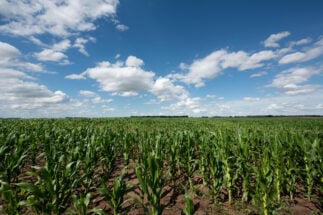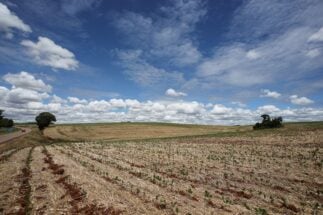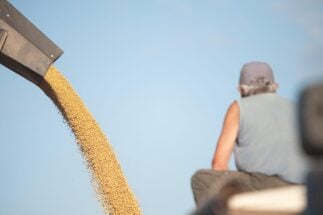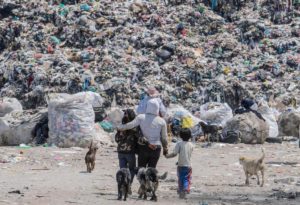Just as he has done for 35 years, Gustavo Recupero inspects some 70,000 hectares of farmland each week across the Pampas region of central Argentina. An agronomist and agricultural engineer, he advises producers here in one of the country’s most fertile farming areas. But, he says, “I’ve never seen this,” speaking of the impacts of a drought that has endured for the past three seasons.
According to data from the Rosario Stock Exchange (BCR), since mid-2020, Argentina’s agricultural heartland, covering the provinces of Santa Fe, Buenos Aires, La Pampa and Córdoba, has recorded a water deficit equivalent to an entire year’s rainfall. In 2023, the impacts of this shortfall will reportedly lead to estimated losses to the national economy of US$20 billion, representing more than 3% of GDP.
What is La Niña?
La Niña is a weather phenomenon that causes fluctuations in sea surface temperatures in the central and eastern equatorial Pacific, leading to changes in tropical atmospheric circulation, namely winds, pressure and rainfall, and, in turn, impacts on the global climate
This water deficit has been driven primarily by a third consecutive year of La Niña, a natural climatic phenomenon, though the effects of climate change have made the situation more severe. In February, scientists from the World Weather Attribution initiative reported that climate change, while not the direct cause, has exacerbated this period of drought, which has been felt across South America.
But the persistence of La Niña – which has left farmers and traders counting the cost of failed production – has not been the only contributing factor to these losses, according to experts such as Rubén Walter, director of agricultural estimates at the Santa Fe Stock Exchange. Drought, he says, has struck amid continuing soil deterioration due to deep-seated production cycles and practices, which figures across Argentine agriculture are now seeking to address to ensure the sector’s sustainability.
A harvest to forget
Due to the impacts of the drought, this season’s production of Argentina’s three main crops – soybean, corn and wheat – will be around 65 million tonnes, a 45% drop year on year, according to BCR data seen by Diálogo Chino. It has been an especially tough time for soybean production, which is experiencing its worst season in 23 years.
“This year was disastrous,” says Valeria Caponi, a soybean grower from Cañada de Gómez, a town in the eastern province of Santa Fe. She describes how her best plots yielded, per hectare, just 11 quintals (a unit used in agriculture; one quintal is equivalent to 100 kg), compared to historical yields of around 35 quintals per hectare. “I had others that yielded barely one,” she added. “My father is 71 years old and he has never seen anything like this.”
The main indicators show the 2022/23 will be a season to forget. Perhaps the most striking figure is for Argentina’s unharvested area, the land that was planted but whose crop was lost pre-harvest: according to BCR data, this area amounted to 36.4 million hectares – three times more than the previous high seen in 2015/16.
The drop in production is set to have a significant impact on Argentina’s foreign trade receipts. BCR estimates indicate that the country will see a 40% decline in export income from soy, compared to 2021/22, representing a loss of around US$8 billion.
Among the main destinations for Argentina’s soy products are China – accounting for 90% of soybean trade – and India, the main buyer of soybean oil. For soybean meal and pellets, exports are more distributed, with Vietnam, Indonesia, Algeria and European Union countries among the top importers.
Not only drought
Drought is the primary cause of Argentina’s drop in agricultural output, but factors related to a “tremendously extractive” production model have contributed, says Recupero, who carries out his advisory work for the Rosario Rural Society. The agronomist describes the situation as “very serious”, with 30% of soybean fields seeing yields between 0 and 4 quintals per hectare, when usually those figures range between 28 and 32 quintals per hectare, according to a report he recently authored.
Rubén Walter of the Santa Fe Stock Exchange echoes Recupero’s concerns. “For the last ten years or so, we have been observing a process of physical deterioration of the soil,” he explains. “The structure of the soil – its permeability, the internal movement of the roots – is not in the same condition as it was a decade ago.”
For Sergio Montico, a professor of land management in the National University of Rosario’s Faculty of Agricultural Sciences, Argentina’s process of soil degradation has been underway for decades. “We have not done things right in terms of technological practices to mitigate it,” he says.
Several agricultural producers consulted by Diálogo Chino share this view, but they defend themselves, pointing out the difficulty of making the necessary investments to improve soil health. “They are uneconomical, in the face of tax pressure or market disruption,” says one farmer, who asked not to be named. “You only invest in what you can, to be honest,” says another.
In November 2022, the World Bank published a report in which it recommended a series of measures for Argentine agriculture in the context of frequent and persistent droughts. It stated that the sector could help to ensure its resilience by adopting climate-smart techniques, drought-resistant crops and index-based insurance schemes, under which pay-outs are related to factors such as rainfall levels.
Initiatives to improve water management are also underway, such as the Argentine government’s national plan to expand sustainable irrigation systems, launched in April. Currently, only 5% of the country’s 42 million hectares of farmland is irrigated, and the plan aims to invest US$2 billion to double this area. So far projects covering roughly 160,000 hectares have been implemented, but the announcement of new financing may help towards the plan’s ambitious goal of extending irrigation systems on 1.9 million additional hectares of land.
The way we do agriculture in Argentina, we are not used to making forecasts, planning, mitigating or adaptingSergio Montico, land management professor, National University of Rosario
According to Montico, who has been working for more than three decades in soil management and conservation practices, the country must make up for lost time, as a passive attitude has pervaded for too long. “The way we do agriculture in Argentina, we are not used to making forecasts, planning, mitigating or adapting,” he says.
Walter agrees, describing a dismissiveness around soil degradation among many seasoned farmers accustomed to the vicissitudes of production. “There is a phrase I often hear when I go to the field,” he explains, “that the soil ‘will hold out’.”
Will the soil hold out?
With work set to begin soon for the upcoming season, this extended period of severe drought is expected to fade into memory. But it will not be a season with normal water levels. Both Mario Navarro, director of the meteorological observatory for the city of Salsipuedes in Córdoba province, and José Luis Stella, a climatologist for the National Meteorological Service, tell Diálogo Chino of the projected arrival of El Niño, the counterpart weather phenomenon to La Niña that will likely bring above-average rainfall.
For some, this could be seen as great news, counteracting the three years of drought driven by La Niña. However, the experts warn, readings are not entirely linear.
“It cannot be expected that after one or two rains, within two months, the soil profile will be in optimal condition again,” says Rubén Walter. Groundwater, he says, “will be partially recharged, but a good part of the water will run off. We will have areas with a lot of water running off, and if we measure the soil, we will see, at [a depth of] 80 or 90 centimetres, a lack of water.”
With soils in their “driest condition in the last 30 years”, according to BCR analyst Marina Barletta, the outlook for Argentine agriculture is still uncertain. A report from the Buenos Aires Grain Exchange puts it most clearly: though intense rains may come, after three years of drought, “quick relief should not be expected”.
